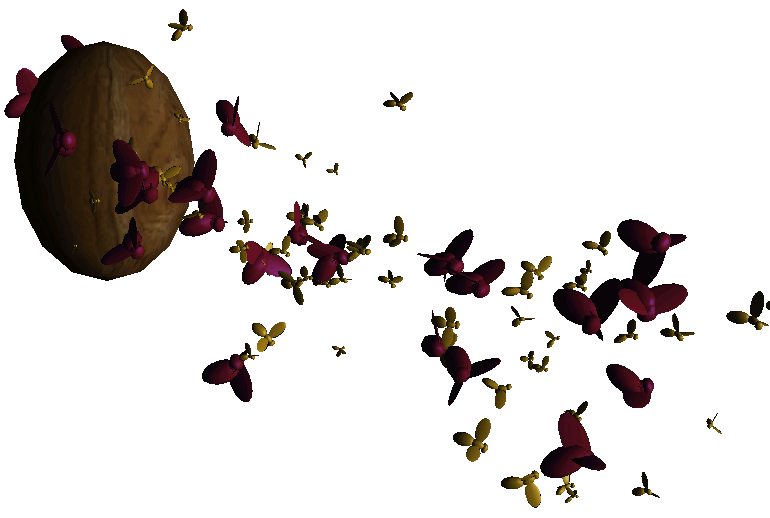Substituting objects for particles allows you to use objects as part of a particle simulation. You can use any 3D object in place of particles to create many different effects. For example, you could use party streamers as particles to make a parade scene, cars to create a flow of traffic around a traffic circle, or characters to create a crowd scene. You can also loft instanced shapes along particle strands to create many different effects.

What Do Instances Inherit from Their Master Object?
Instances are exact copies of their master object's geometry, including their materials (such as color and texture). This means that instances get their rendering information from their master object.
If the geometry of the master object is animated (shape animation or a deformation), the instance also inherits that. See Using Animated Master Objects for details on using master objects with animated transformations.
What Do Instances Inherit from Their Particle?
Instances inherit these attributes that define the particle's movement and size: Position, Velocity, Orientation, and Size.
You could use a Randomize or Turbulize compound (such as Randomize Value by Range) to add some variation to these attributes for the instances. See ICE Particle Size, ICE Particle Speed, and ICE Particle Orientation for more ideas on which compounds to use for adding variation.
Collision Geometry for Instances
If you're using instances as particle shapes in collisions, different collision geometry is used for the instance geometry depending on the type of collision you're creating:
See Collision Geometry for Instanced Shapes for more information.
If you want to keep the master objects in the scene, but you don't want to worry about them being displayed or rendered, you can simply move them out of the camera's view, or you can hide them by selecting the Instance Master Hidden option in each master object's Visibility property editor (Rendering tab).
If you hide the instance master in the standard way (such as by pressing H), they are not displayed when they are instantiated by the particles.